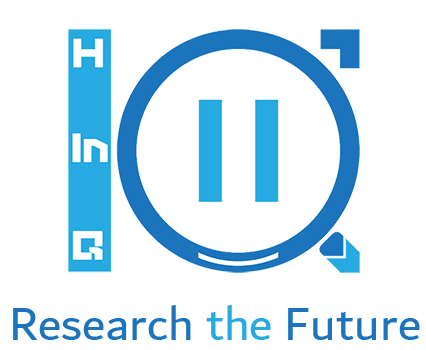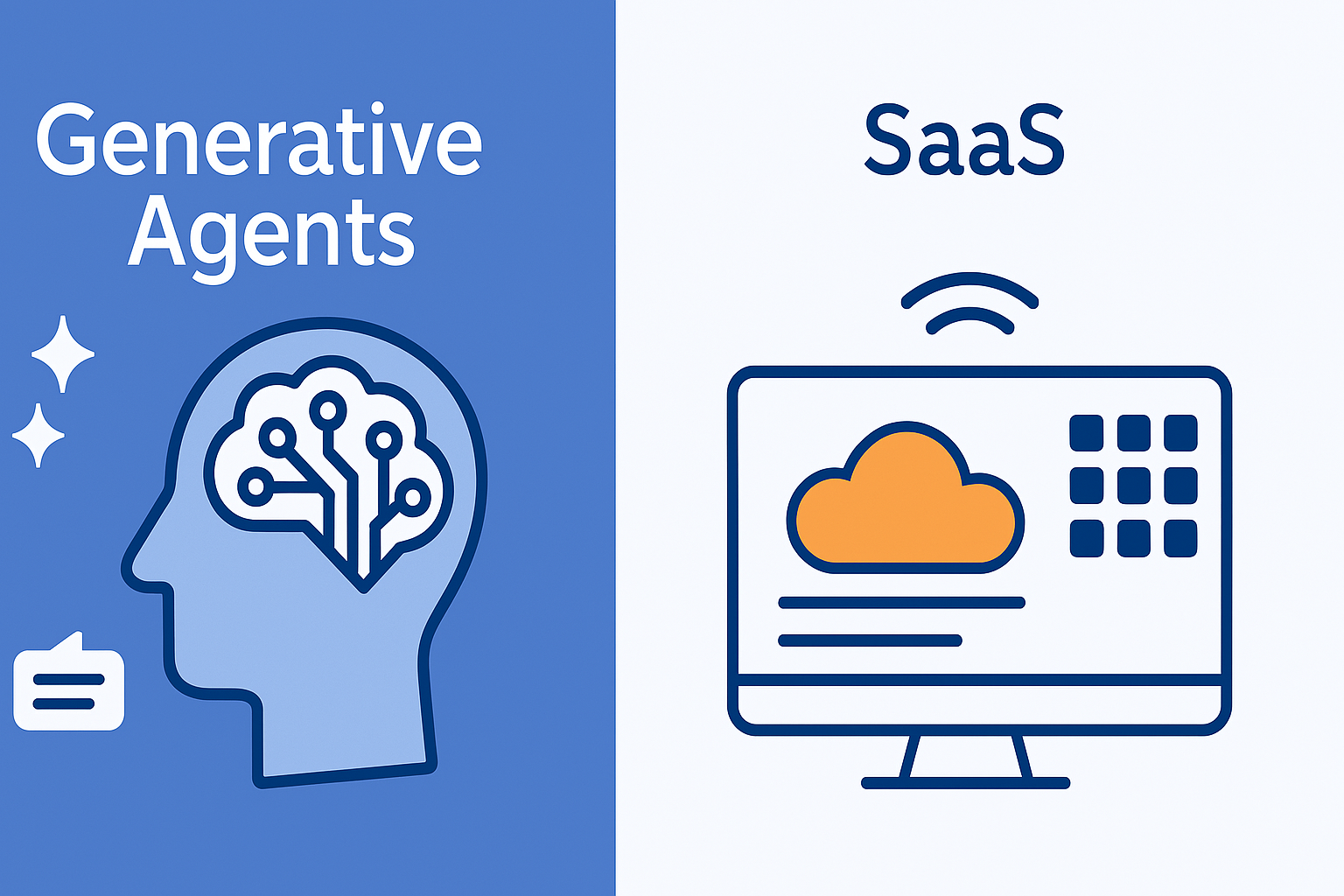Introduction – Generative Agents: The New Power Play for Market Research Boutiques
Market research boutiques have long operated under the shadow of expensive, complex SaaS platforms—solutions designed for big players with deep pockets. But the game is changing. Generative agents, AI-powered tools capable of automating research workflows, are putting power back into the hands of smaller players. Unlike SaaS platforms, which require costly implementation and heavy maintenance, generative agents are easier and cheaper to deploy, offering immediate value without the barriers of complex integrations.
SaaS platforms once protected industry giants by making research operations costly and resource-heavy. Now, generative agents level the playing field. With their ability to design surveys, run simulations, and interpret results in real-time, agents slash time-to-insight and reduce operational costs—advantages that boutiques can immediately leverage.
The era of SaaS as an automation market entry barrier is fading. Generative agents are not only accelerating research workflows but also shifting the competitive landscape, empowering boutiques to outperform their larger rivals with agility, speed, and innovation.
Generative Agents Redefining Market Research
Generative agents are AI-powered entities capable of autonomously executing research tasks—without relying on predefined workflows or human prompts. Unlike traditional SaaS platforms, which require manual inputs and configuration, agents act as independent problem-solvers. They can design surveys, generate synthetic panels, analyze data, and deliver actionable insights—all in real time.
The difference from SaaS is clear: agents are adaptive, automated, and infinitely scalable. SaaS platforms rely on templates, dashboards, and modules that often trap researchers in rigid processes. Agents, however, learn and iterate, adjusting their outputs based on previous tasks. This self-improving nature allows them to produce faster results without the overhead of multiple tools or complex integrations.
More importantly, agents lower the cost of automation market entry for boutiques, cutting out expensive licensing fees and technical barriers that have long favored larger firms. With minimal setup and no need for extensive training, generative agents empower small research teams to run sophisticated studies with the efficiency and power once reserved for industry giants.
SaaS: Research Delivery’s Important Channel… or Just Dead Weight?
SaaS platforms have long been an important market research delivery channel, providing structured tools for surveys, analytics, and reporting. They became essential because they offered ready-made solutions that streamlined operations—but their time as the gold standard is fading. Today, the same platforms, that once accelerated research, are increasingly becoming bottlenecks.
The problem is in their design: SaaS platforms are built for scale, not speed. They demand logins, licenses, and manual configurations that slow down workflows. Their structured interfaces, once an advantage, now feel like straightjackets—limiting customization and making fast pivots impossible. Meanwhile, updates, plug-ins, and integrations add complexity without adding value.
In contrast, generative agents deliver outcomes without overhead, generating insights without the drag of dashboards and modules. Agents learn, adapt, and execute tasks without human micromanagement—outperforming SaaS workflows in both speed and simplicity.
SaaS may still be a channel for research delivery, but as agents automate the entire process, it’s clear: the future belongs to those who break free from SaaS limitations.
Flexibility vs. Frameworks: Why Generative Agents Leave SaaS Behind
Unlike SaaS platforms, which lock researchers into rigid workflows, generative agents blend flexibility with structure, offering research operators a spectrum of control. Agents can execute tasks with complete autonomy, operate within predefined guardrails, or seamlessly combine both approaches. This adaptability makes them far more versatile than SaaS platforms, which rely on standardized modules that rarely accommodate real-time adjustments.
The real power of generative agents is their ability to work within or beyond structured frameworks, giving researchers the freedom to experiment or enforce consistency as needed. In contrast, SaaS platforms force users into a single mode of operation—often slowing down customization, testing, and iteration.
This shift redefines expertise in market research. Tomorrow’s leaders won’t just be research specialists—they’ll be orchestrators, seamlessly combining research expertise with the ability to direct and optimize AI-driven agents. Success will come from mastering both strategy and automation, using agents not just as tools but as extensions of research thinking. Where SaaS demands conformity, agents empower creativity—fusing human intelligence with AI execution.
Cost and Scalability: Do Generative Agents Deliver More for Less?
Generative agents are reshaping the economics of market research by delivering more output with fewer resources. Unlike SaaS platforms, which often lock businesses into costly subscriptions and tiered pricing models, agents offer on-demand scalability without the overhead of additional licenses, plug-ins, or modules. Boutiques, in particular, benefit from this lean model, accessing enterprise-level capabilities without enterprise-level costs.
The cost advantage is undeniable: generative agents are not only cheaper to implement than SaaS platforms, but their costs are divided by 10 or more each year, thanks to rapid advances in AI efficiency and computing power. This means that as agents improve, they become exponentially more cost-effective—an advantage SaaS models, with their fixed pricing and incremental updates, can’t match.
But the real value is in operational efficiency. Agents work 24/7, executing multiple research tasks simultaneously—survey deployment, trend analysis, and reporting—without requiring separate tools or platforms. SaaS platforms, with their complex integrations and paywalled features, inflate costs as needs grow.
With agents, cost aligns with value: you pay for insights, not interfaces. For market research boutiques aiming to maximize margins and output, generative agents aren’t just efficient—they’re the smarter investment.
SaaS is Dead: Generative Agents Will Own the Future of Research
SaaS platforms are not evolving—they’re disappearing. The shift is no longer a prediction; it’s a reality. In a recent groundbreaking podcast appearance, Microsoft CEO Satya Nadella dropped a bombshell: he predicted the death of SaaS and traditional software applications as we know them. Coming from the leader of a company that built the modern software industry, this isn’t hype—it’s a clear signal that the era of SaaS is ending.
Generative agents are the reason. Unlike SaaS, agents don’t need interfaces or dashboards—they simply execute tasks, generate insights, and adapt instantly to new objectives. They replace workflows, not tools, making the rigid, costly structures of SaaS obsolete.
Some argue for a hybrid future, but let’s be clear: SaaS is on borrowed time. The businesses that cling to it will be left behind, while those embracing agents will unlock faster, cheaper, and more adaptive research processes.
The research toolkit of tomorrow won’t be built on SaaS—it will be built by agents.
Conclusion – Generative Agents: The New Standard for Market Research
The verdict is clear: SaaS is yesterday’s solution—generative agents are today’s advantage and tomorrow’s standard. The old promise of SaaS—scalability, efficiency, and structure—has been outpaced by agents that deliver faster results, greater flexibility, and exponentially lower costs.
Agents are not just tools; they are process accelerators. They replace multi-platform workflows, automate research tasks from end to end, and adapt to new challenges instantly. What once required expensive SaaS ecosystems can now be achieved faster and cheaper with a single AI-driven agent. As Satya Nadella himself declared, the SaaS era is over—and those who cling to it risk becoming irrelevant.
But this shift is not just technological—it’s strategic. The winners of tomorrow will be those who master the orchestration of agents, combining research expertise with AI-powered execution.
The age of SaaS is closing. The era of generative agents is here. And for market research boutiques, the promised land isn’t coming—it has arrived.
References:
- What are Generative Agents? – OpenAI
- The Future of SaaS in Market Research – Forrester
- H-in-Q Analytics



